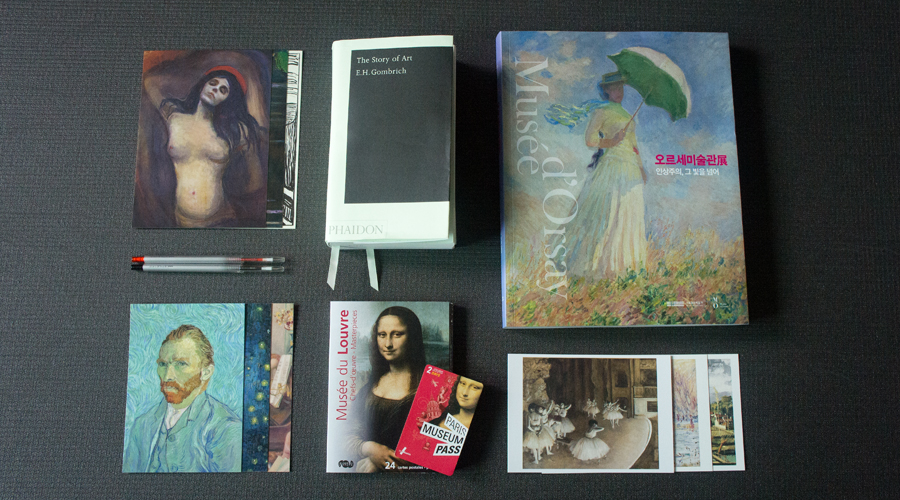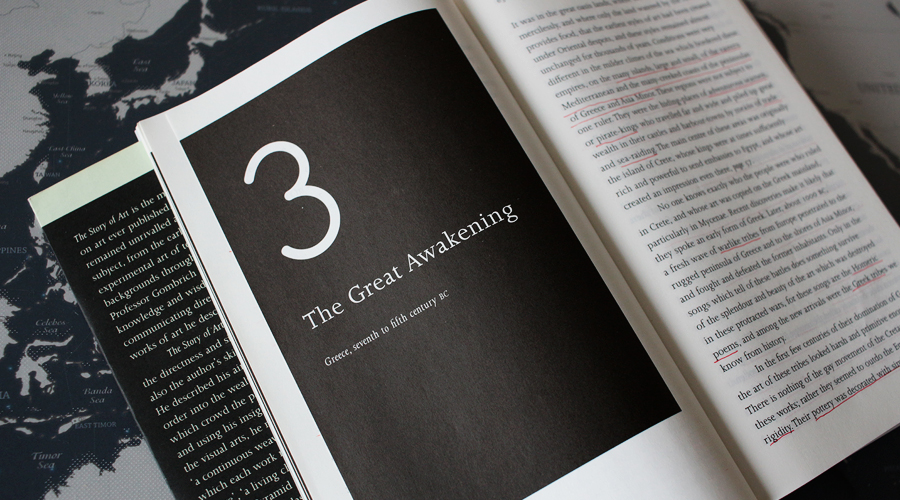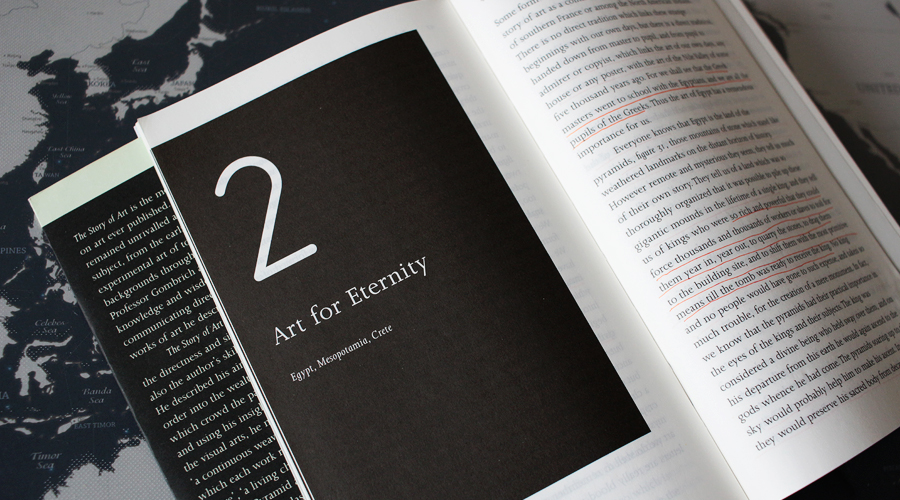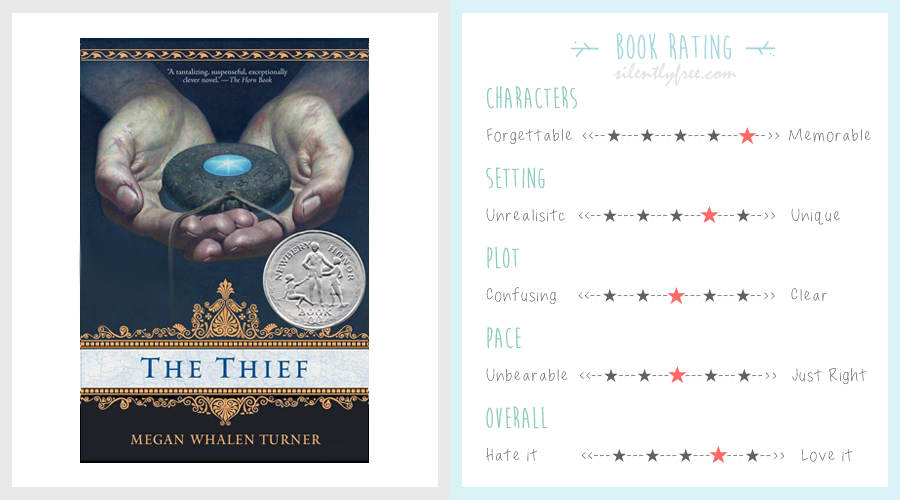
Summer is coming to an end. I will always remember this glorious Summer of 2014 as the Summer of Art. I finally got to see Europe and the top museums and galleries of the world. The British Museum, the National Gallery, the Louvre Museum, the Orsay Museum, and the Vatican Museum. In college I took a few art history courses that covered specific time periods and works, but never one that surveyed everything from beginning to end. So I’ve decided to read through E.H. Gombrich’s The Story of Art. I probably should have done this before I went to Europe and visited the museums and galleries, but the trip was abrupt so there wasn’t enough time. I was glad to find an English copy from the Kyobo Book Centre in Seoul. Not that reading it in Korean would have been overly difficult, it’s just that I much prefer reading books in their original language. Translations always taste different from the original words; they lose the word play, the humor, and the soul.
Over the years I’ve found that my experiences and thoughts that are not recorded slip away from memory. Names are lost, dates are hazy, and I can barely remember who I was with or what I was doing at the time. Highlights and underlines on pages were useful at the time, but when I open the same book months later and the meaning that grabbed my attention is lost. The only thing that will keep those thoughts alive is writing.
“It is often the expression of a figure in the painting which makes us like or loathe the work (p.22).”
I often wonder how the artist has managed to capture not only the fleeting expression but also the person’s character. Perhaps that’s why we stand fascinated in front of portraits, whisked away into their lives. Personality bleeds through the colors and shapes, embodying the person and the artist that drew them. Then there is the viewer; the harsh, critical eyes of the viewer. That moment when the viewer stands before the artwork judging its value and significance. Some will be passed without so much as a mere glance, while others lock the viewer prisoner for endless silent minutes that pass.
I think back on when I was a child. An ignorant self-absorbed child who had no interest whatsoever in art and portraits. Every monumental moment in my education has been the simple realization that everything- every trade, event, and purpose-is about humankind. Which means everything is about human observation. You hear high ratings and praise about some product or company and find it is all about people. From art to computer engineering it is all about people. So professionals and great people that walk among us are ultimately the greatest observers of people.
Knowing that, everything changes. Even the portraits change. They are no longer random portraits by random artists. You see the portrait, you feel the emotions, and you meet the people. How many countless hours did the artist spend face to face with this person? What did they see in that particular person that was different from so many others? Do people still have their portraits drawn these days? We live in a time when we are blessed by the infinite number of photos we can leave of our faces. Yet portraits by artists are still something that seems rare among us. Although, I myself would probably not feel all too comfortable sitting there with someone staring back at me. Perhaps that’s one of the reasons why portraits aren’t that common.
“We must first learn to know [the artist’s] methods of drawing to understand his feelings (p. 23).”
Some prefer audio guides to learn about art works in a gallery, others don’t. It is easy to decide a preference for one or the other. I tend to prefer audio guides, but I understand why others wouldn’t. It is nice to be able to see a piece of art without any sort of influence by others on how we should feel or perceive it. I wonder though, is it truly possible not to be influenced by the thoughts of others? We are influenced by the people around us, the objects around us, the experiences we have lived through, and the education we have received. The way we view one piece will no doubt be influenced by the works we have seen before it. Unless you enter an empty gallery, you will be influenced by the other people in the gallery. You’re likely to hear the discussions of other viewers and commentaries by guided tours. There is no such thing as silence in a full gallery. Instead, there are questions and supposings with a bit of knowledgeable comments thrown in here and there. There are nods and tilted heads that muse over the conversation that has grown around them. Still, we like to think that our thoughts are purely our own and would like to decide what to think about a piece without having them decided for us by an audio guide. Fair enough. In my case, I like to see a piece, feel it, ponder over it, then listen to what the audio guide has to say about it. Audio guides will never dictate your thoughts unless you allow them to be. Instead, I feel as though they offer history and background that can add more layers to the relationship you have formed with a piece.
“We should never condemn a work for being incorrectly drawn unless we have made quite sure that we are right and the painter is wrong (p. 25).”
Sometimes I wish there were commentary for all the pieces that are displayed in a gallery. Perhaps this would be unreasonable in terms of time and practicality, not to mention cost of labor. I don’t mind as much with artworks I can make sense of. It’s more the works that I struggle with that I often wish for commentary. Usually the works I struggle with most are modern art. Appreciation comes harder and understanding fails me frequently. Yet when lightning strikes it is profound and moving in a way that is difficult to explain with words. Still, I find myself fighting the distaste that grows as I stare at some bizarre piece of work and try to understand why the artist created it, and why others have found it to be art. I find myself drowning in frustration and sometimes even guilt as I simply can’t find what to make of the work before me. Perhaps this is a good thing. Life without mysteries and full of uniform predictability would be unbearably boring. I should be allowing art to push me out of my comfort zone and challenge the way I perceive the world. Why is then that I find it so much of a struggle?




